Seaweeds of the South African South Coast


Order Ceramiales
Family Wrangeliaceae
Anotrichium tenue (C. Agardh) Nägeli 1862: 399
Plants only in the west of the area up to 10 cm across, often rather smaller; epiphytic or entangled with other algae, sometimes epizoic on sedentary animals or not evidently attached to living substrata. Thallus unusual in this region in having (vegetative) branching from the proximal end of cells of the main axes. Digitate haptera arising from the same end of the cells. Main axis up to 300-400 µm in diameter, the cells to over 1 mm long. Apical and subapical segments shorter than broad, apical cells ca. 75 µm in diameter. Branching unilateral, especially when fertile branches are present, one every segment, fertile branches originating subapically. Trichoblasts often abundant on a few apical cells, consisting of two or three cells.
Tetrasporangia on a number of subapical cells, often replacing trichoblasts, terminal (or subterminal) on elongate pedicels, almost globose, ca. 100 µm in diameter, tetrahedrally divided. Spermatangial capitula in similar positions as tetrasporangia, although in slightly smaller numbers. Pedicellate clusters pyramidal. Carposporophytes one per segment, often a small number on consecutive filaments, the female fertile filaments being three-celled. The carposporophyte develops from the second cell, the undivided involucral cells from the hypogenous cell. Mature carposporophytes up to 500 µm, consisting of several gonimolobes.
Collections, ecology and regional distribution
Recorded from Doring Bay on the west coast to northern KwaZulu-Natal (8-58). Plants epilithic, epiphytic, or epizoic in the lower eulittoral and tidal pools and often in algal turfs.
World distribution: worldwide in tropical and temperate seas (Guiry & Guiry 2015).
Type locality: Venice, Italy (Silva et al. 1996).
Note: There may be some confusion between this species and Anotrichium secundum (Harvey ex J. Agardh) G. Furnari on our coast. Both may be present, but the characters that would separate them are slight (numbers of tetrasporangia in a whorl and the not very distinct character of tetrasporangium-insertion on the stalk cell, i.e. either truly terminal or subterminal). See also Stegenga (1985) for further details and illustrations of A. tenue.
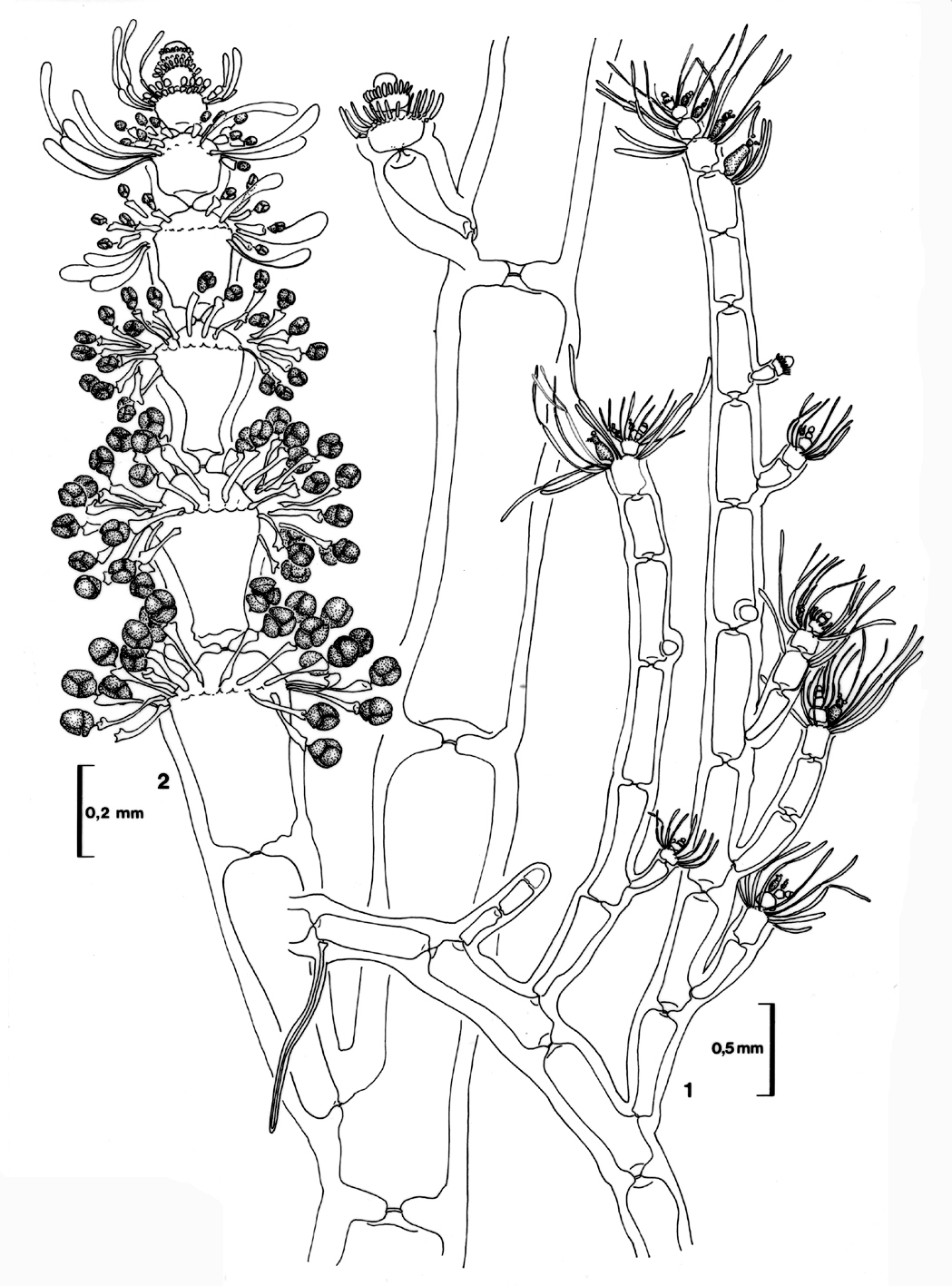
Anotrichium tenue. 1. Microscopic habit. 2. Tetrasporangia. Reproduced from Stegenga et al. 1997.
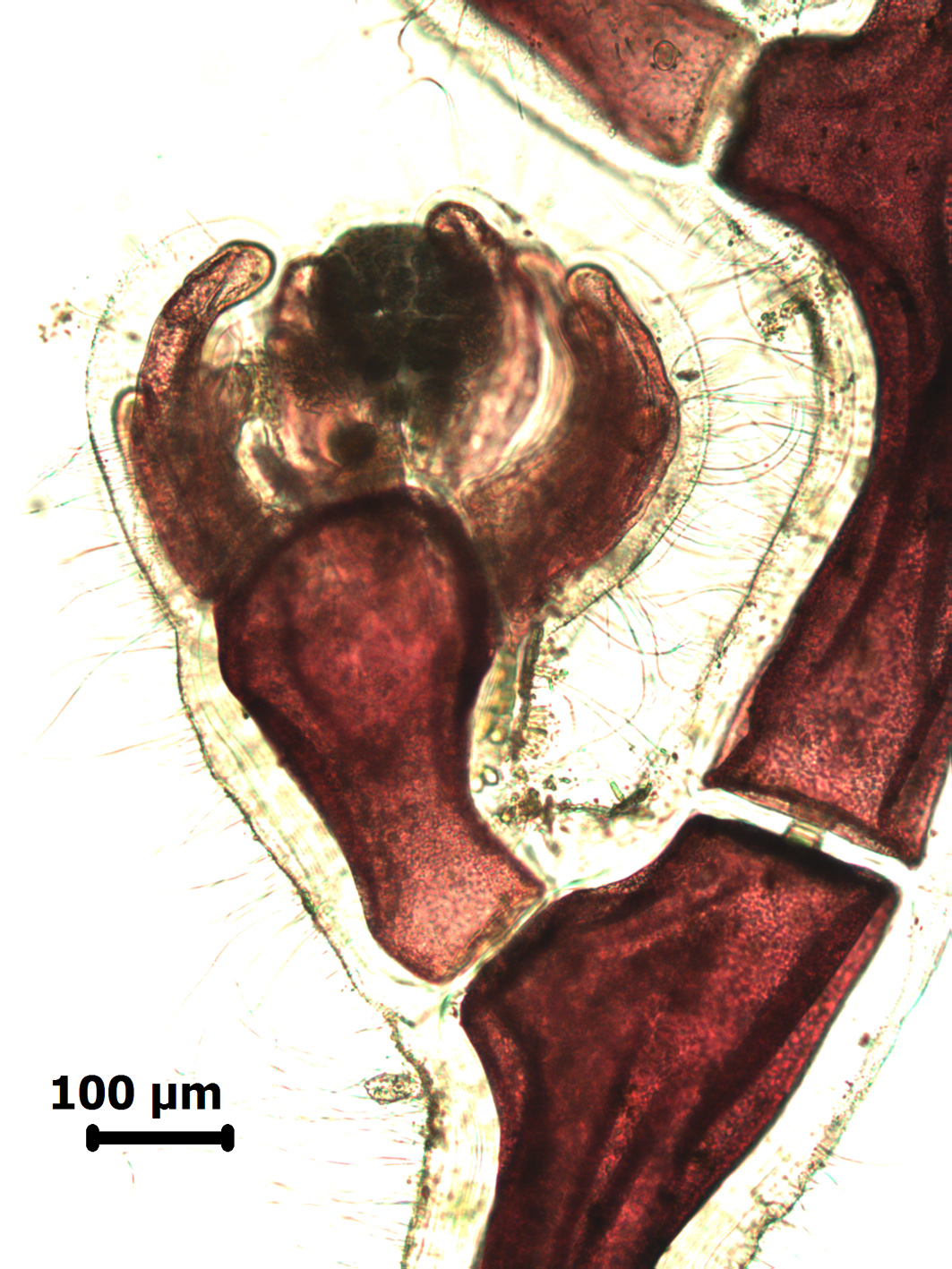
Anotrichium tenue, female with developing carposporophytes, fresh material.
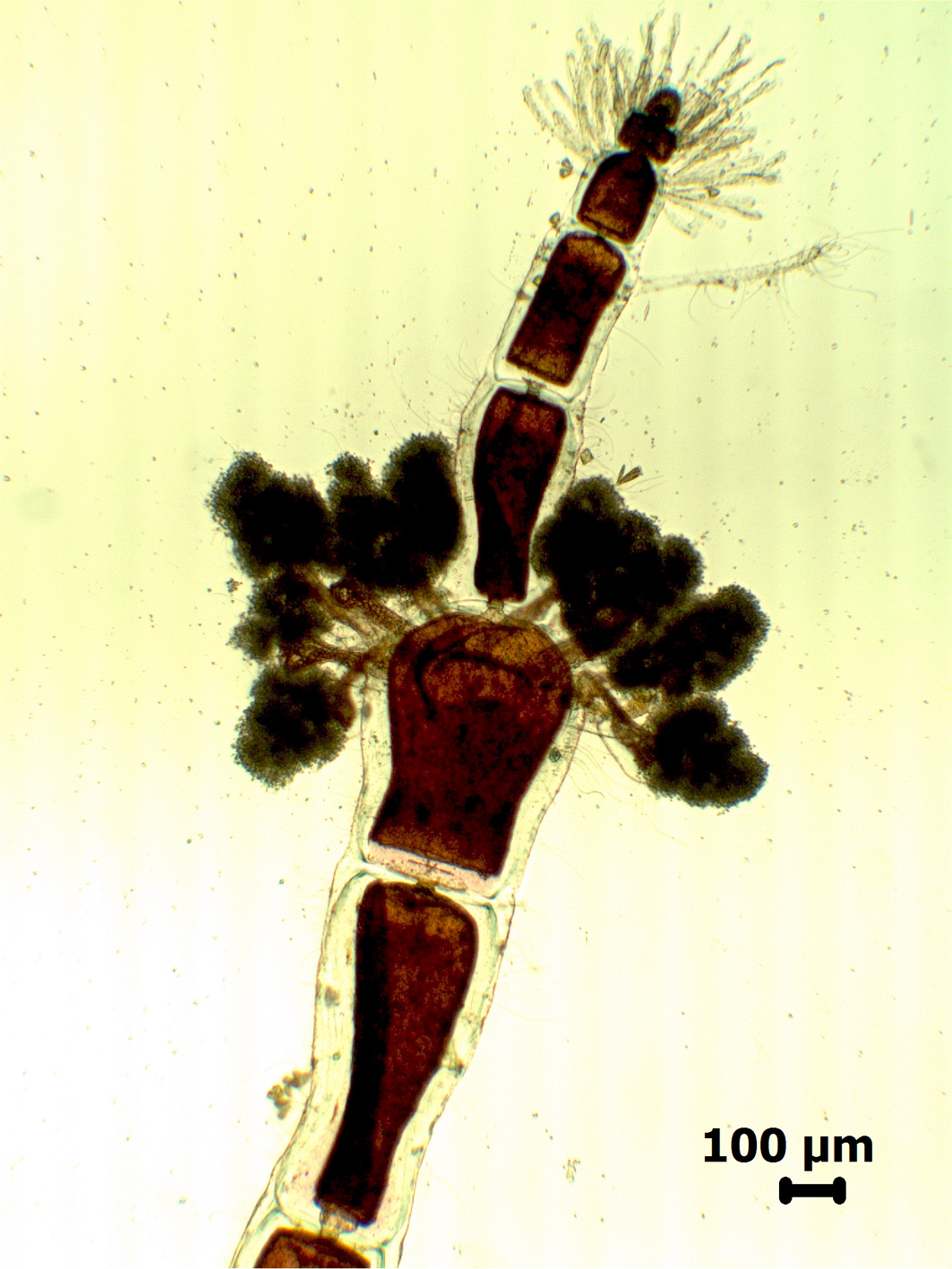
Anotrichium tenue, tetrasporangial, fresh material.
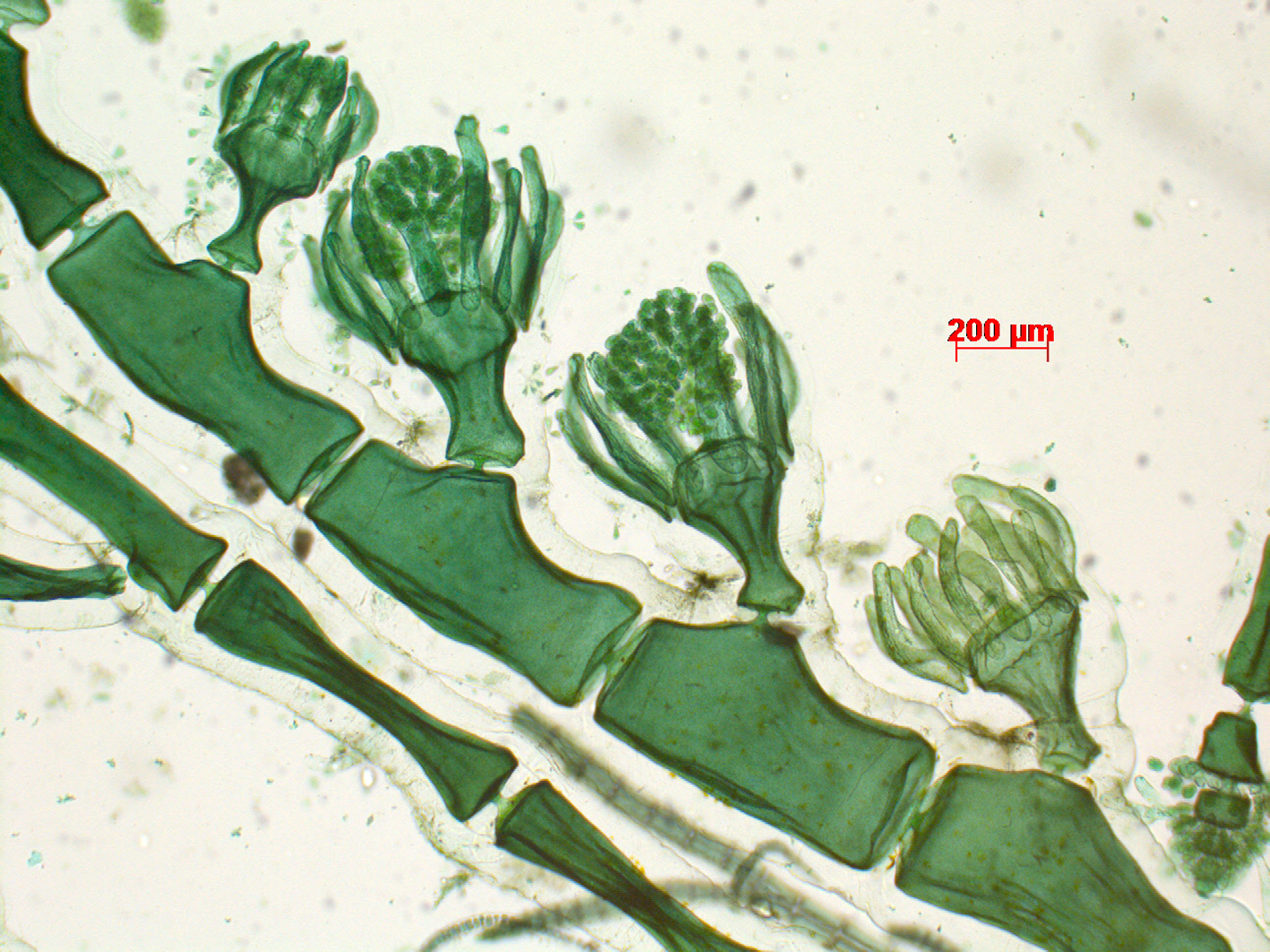
Anotrichium tenue, female with carposporophytes. Stained slide material, Woody Cape.
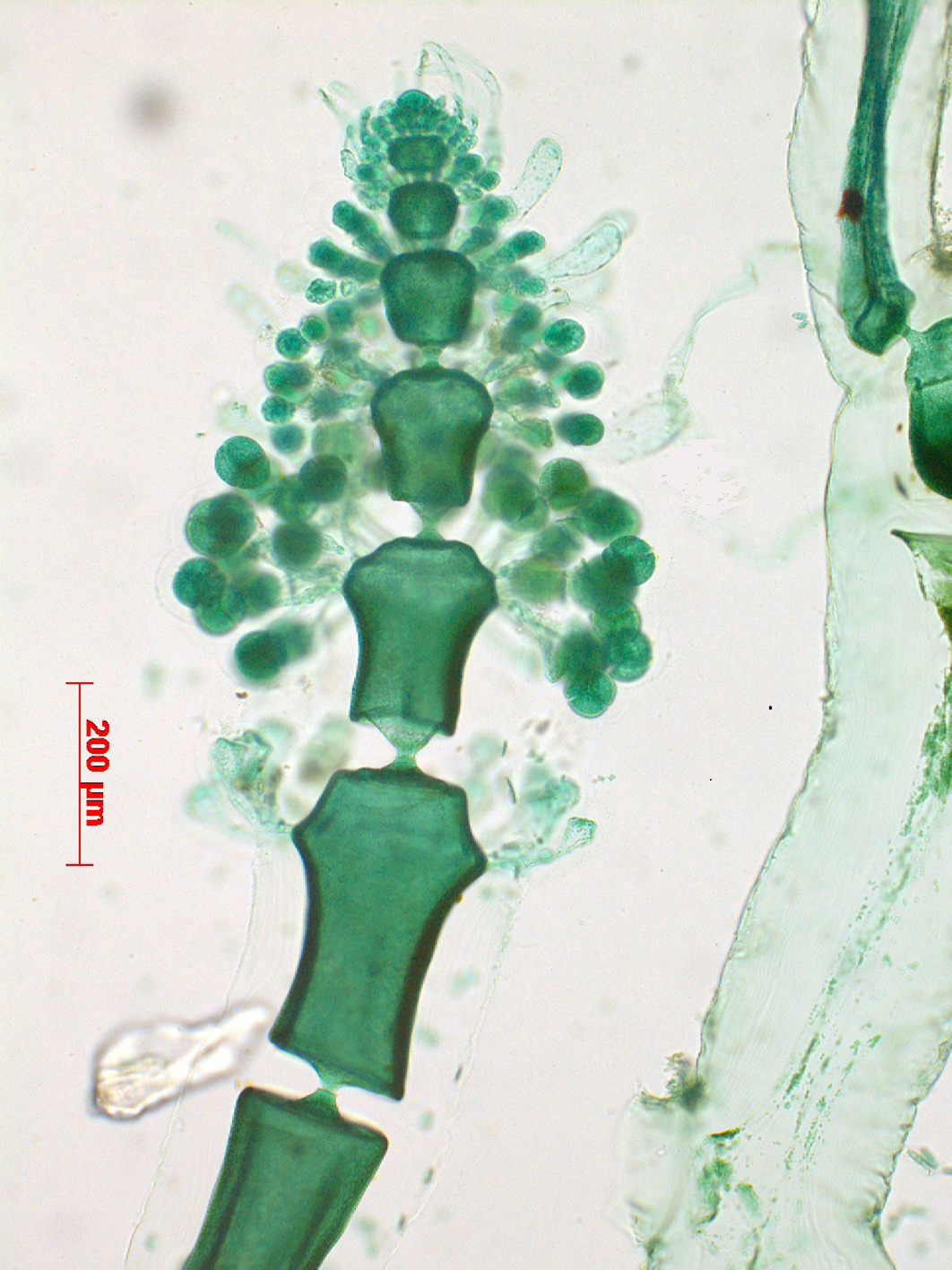
Anotrichium tenue, tetrasporangial. Stained slide material, Woody Cape.
References Anotrichium tenue
Guiry, M.D. & Guiry, G.M. 2015. AlgaeBase. World-wide electronic publication, National University of Ireland, Galway. http://www.algaebase.org; searched on 15 September 2015.
Nägeli, C. 1862 '1861'. Beiträge zur morphologie und systematik der Ceramiaceae. Sitzungsberichte der Königlichen Bayerischen Akademie der Wissenschaften zu München 1861(2): 297-415, 30 figs, 1 pl.
Silva, P.C., Basson, P.W. & Moe, R.L. 1996. Catalogue of the benthic marine algae of the Indian Ocean. University of California Publications in Botany 79: 1-1259.
Stegenga, H. 1985. A note on Anotrichium tenue (C.Ag.) Näg. (Ceramiaceae, Rhodophyta) in Southern Africa. Acta Botanica Neerlandica 34 (2): 145-155.
Stegenga, H., Bolton, J.J. & R. J. Anderson. 1997. Seaweeds of the South African west coast. Contributions from the Bolus Herbarium 18: 655 pp.
Cite this record as:
Anderson RJ, Stegenga H, Bolton JJ. 2016. Seaweeds of the South African South Coast.
World Wide Web electronic publication, University of Cape Town, http://southafrseaweeds.uct.ac.za; Accessed on 07 January 2026.